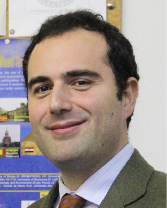Optimization of fly-ash to soil mix ratio and curing period for subgrade use
Abstract
A laboratory study was conducted to determine the optimum fly-ash to soil ratio that can be used as a road subgrade to improve strength and compactability. Proctor compaction, grain size distribution, Atterberg limits, and unconfined compression tests were conducted. Proctor compaction test was conducted to determine the optimum moisture content and maximum dry density of soil samples with 0%, 40%, 50%, and 60% fly-ash content. Atterberg limits and grain size distribution tests were conducted to classify the soil. Unconfined compression test was conducted with air-dry curing periods of 0, 2, 8, and 28 days to determine the strength. Curing periods help understand the strength gained with time. It is obvious from the study that the optimum soil to fly-ash mixture was a mixture of soil and 50% fly-ash which is expected to perform better as subgrade materials for a curing period of 8 days; however, a mixture of soil with 40% fly-ash content could also be used as a viable alternative for the same curing period.
Copyright (c) 2019 M. A. Karim, Sami Hassan Ahmed , Fatih Oncul

This work is licensed under a Creative Commons Attribution-NonCommercial 4.0 International License.
References
1. 2016 Production and Use Survey Results News Release. Available online: https://www.acaa-usa.org/Publications/ProductionUseReports.aspx (accessed on 5 November 2019).
2. Mahvash S, López-Querol S, Bahadori-Jahromi A. Effect of class F fly ash on fine sand compaction through soil stabilization. Heliyon. 2017; 3(3): e00274. doi: 10.1016/j.heliyon.2017.e00274
3. Environment Information System (ENVIS). Summary of Fly-ash Generation and Utilization during the Year 2011-12, 2012-13, 2013-14, 2014-15 and 2015-16, 2016-2017 First Half Year” 31/07/2017. Environment Information System (ENVIS).
4. Caldas-Vieira F, Feuerborn HJ. Impact of Political Decisions on Production and Use of Coal Combustion Products in Europe World of Coal Ash 2013. Lexington, Kentucky USA: WOCA; 2013. p. 17.
5. Naik TR, Shiw S. Singh SS, Ramme BW. Effect of Source of Fly-ash on Abrasion Resistance of Concrete. Journal of Materials in Civil Engineering. 2002; 14(5): 417-427.doi: 10.1061/(ASCE)0899-1561(2002)14:5(417)
6. Yadav AK, Gaurav K, Kishor R, Suman SK. Stabilization of alluvial soil for subgrade using rice husk ash, sugarcane bagasse ash and cow dung ash for rural roads. International Journal of Pavement Research and Technology. 2016; 10: 254–261.
7. Yadav AK, Gaurav K, Kishor R, Suman SK. Stabilization of alluvial soil for subgrade using rice husk ash, sugarcane bagasse ash and cow dung ash for rural roads. International Journal of Pavement Research and Technology. 2017; 10(3): 254-261. doi: 10.1016/j.ijprt.2017.02.001
8. White DJ, Harrington DS, Thomas Z. Fly-ash Soil Stabilization for Non-Uniform Subgrade Soil. In: Volume I: Engineering Properties and Construction Guidelines”. Iowa Highway Research Board; 2005.
9. Phanikumar BR, Sharma RS. Volume change behavior of fly-ash-stabilized clays. Journal of materials in Civil Engineering. 2007; 19(1): 67–74.
10. Ozdemir MA. Improvement in Bearing Capacity of a Soft Soil by Addition of Fly Ash. Procedia Engineering. 2016; 143: 498-505. doi: 10.1016/j.proeng.2016.06.063
11. Nath BD, Molla MdKA, Sarkar G. Study on Strength Behavior of Organic Soil Stabilized with Fly Ash. International Scholarly Research Notices. 2017; 2017: 1-6. doi: 10.1155/2017/5786541
12. Mahesh KG, Satish TB. Effect of fly-ash on Properties of Expansive soil. International Journal of Scientific and Engineering Research. 2013; 4(5): 37-40.
13. Georgia Power’s Plant Bowen Environmental Management System. Available online: http://www.georgiapower.com/company/research-conservation-and-stewardship/management- closures/plant-list/plant-bowen.html (accessed on 5 November 2019).
14. Hassan AS. Unitization of High Percentage of Fly-ash in Silty Soil to Enhance the Engineering Properties for Subgrade Use [Marster’s thesis]. Georgia (GA): Kennesaw State University; 2018. p.124.
15. Bhuvaneshwari S, Robinson RG, Gandhi SR. Stabilization of Expansive Soils using Flyash. Fly-ash India, New Delhi, Fly-ash Utilization Programme (FAUP), TIFAC, DST, New Delhi; 2005.



